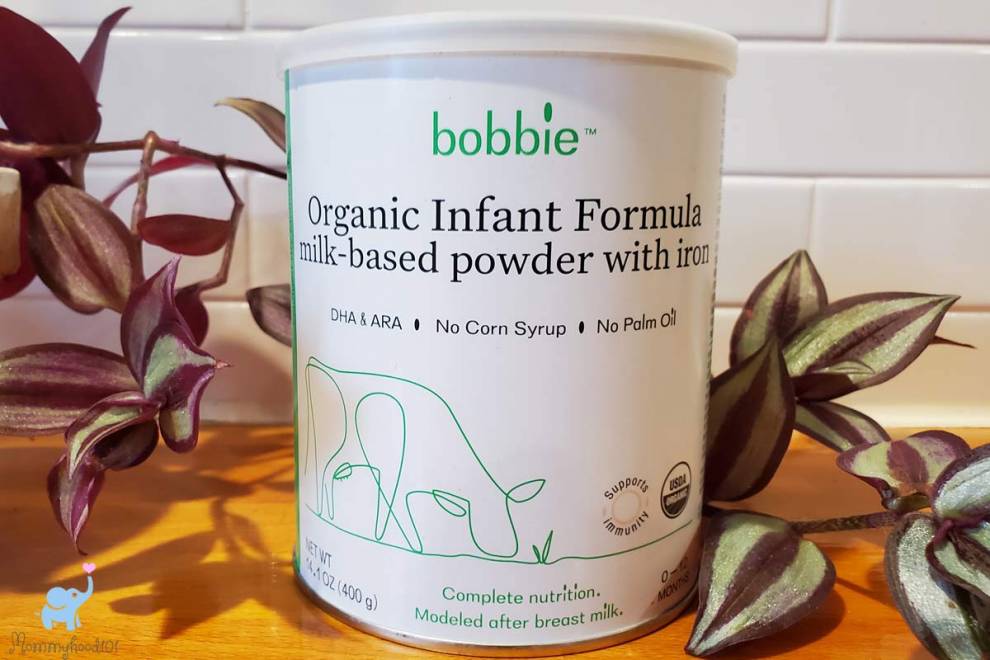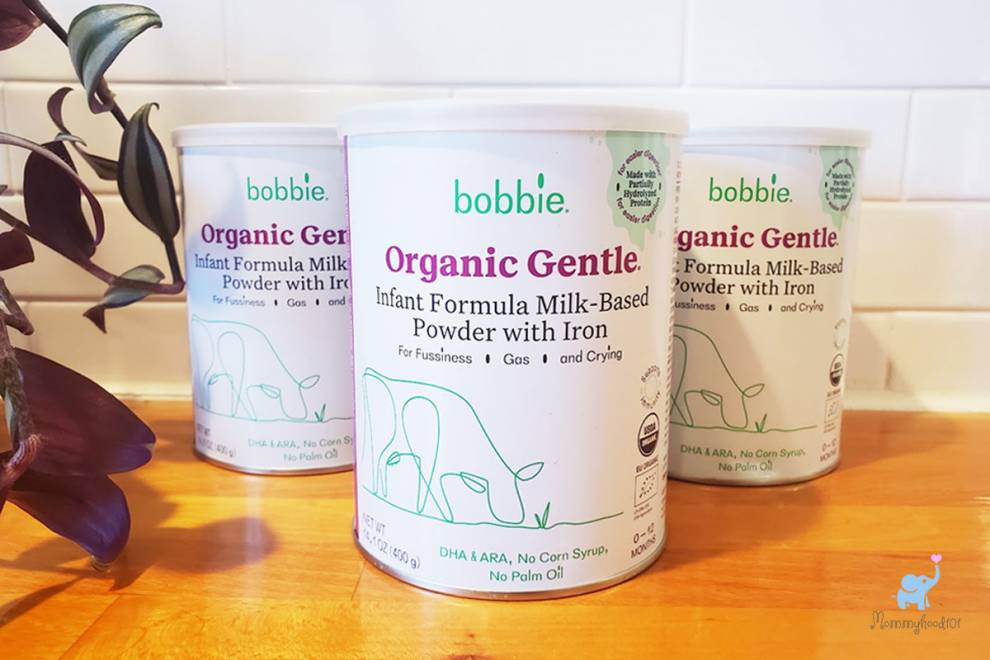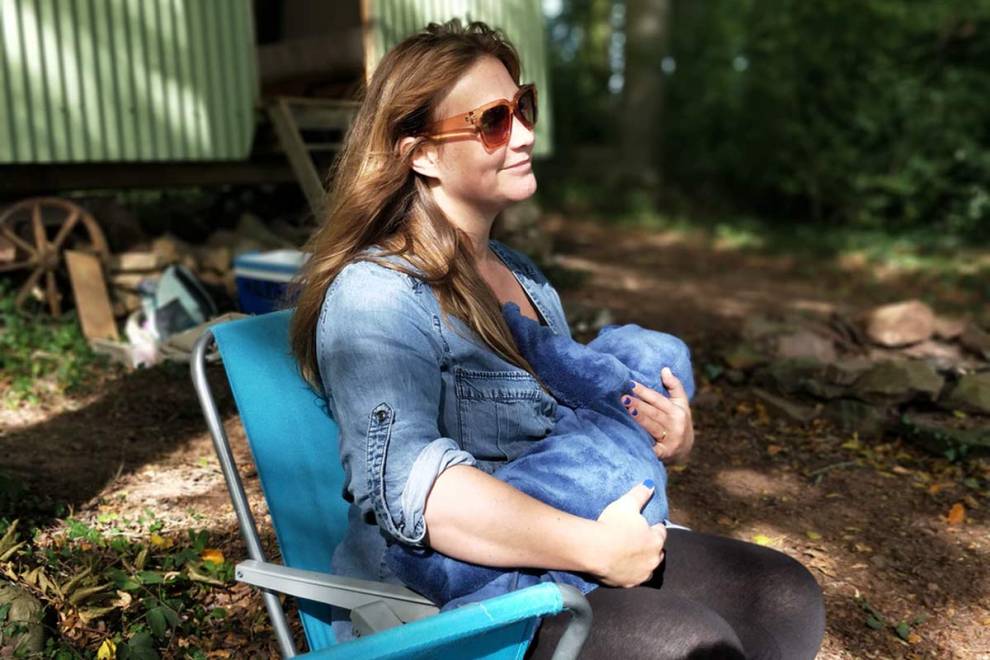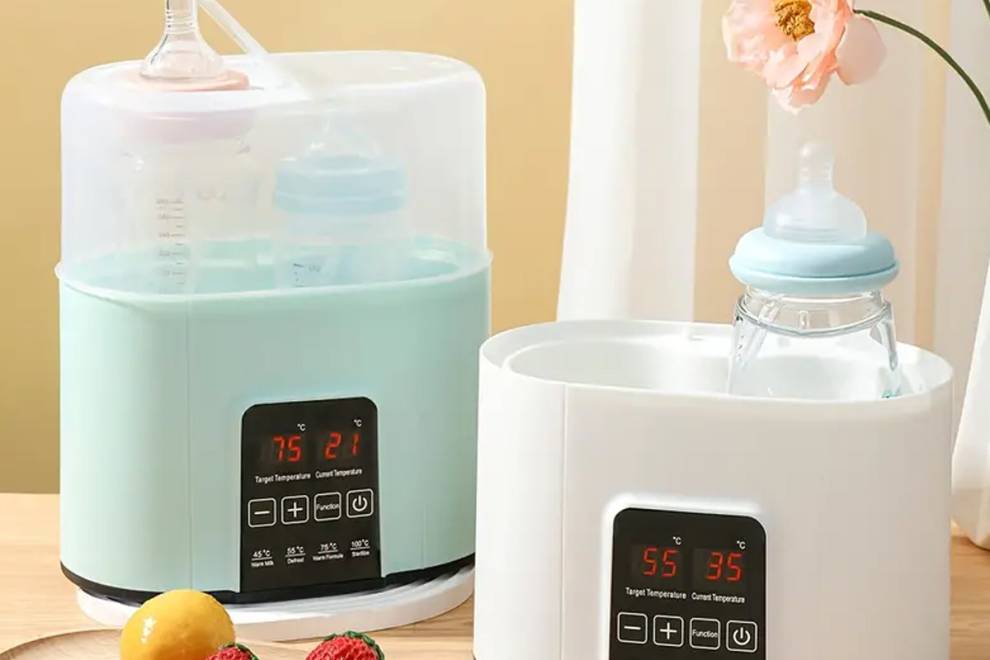No plastic, no problem! Is it time to switch to stainless steel baby bottles?
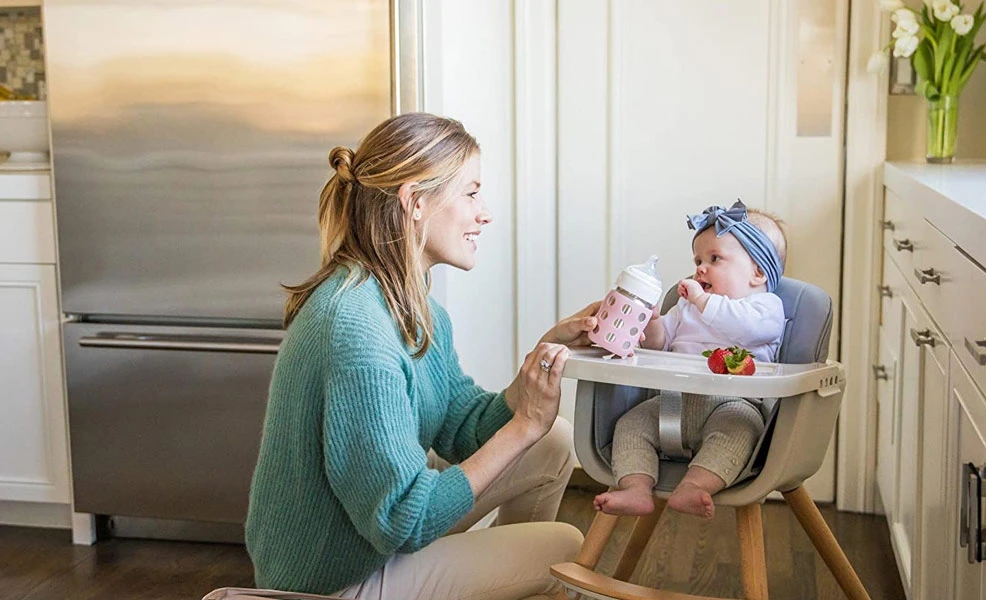
Mommyhood101 independently tests and curates baby gear to help you make informed decisions. If you buy products through links on our site, we may earn a commission.
Given concerns about leaching dangerous chemicals into breast milk and formula, parents are increasingly steering away from plastic baby bottles in favor of safer options, such as glass baby bottles or stainless steel.
At first, parents were shifting toward plastic baby bottles advertised as BPA-free, Phthalate-free, and Bisphenol-A-free. However, recent research shows that even BPA-free plastic baby bottles can leach chemicals into food and beverages.
Specifically, BPA-free baby bottles are commonly made with plastics using BPS, BPF, BPAF, BPZ, BPP, and/or BHPF. Notice how they all have "BP" in their names? That's bisphenol, and leading scientists say that BPA-free plastics are just like BPA in that they leach chemicals that cause genetic and hormonal disruption.
For quick guidance on which baby bottles might suit your needs, check out our annual round-up of the best baby bottles!
They look a lot like BPA [...] and they are going to behave like BPA. - Dr. Hunt, Geneticist at Washington State University
Does Stainless Steel Leach Chemicals?
So what about stainless steel baby bottles? Are they a safe alternative? Well, there are several advantages of stainless steel baby bottles. They don't contain any of the bisphenols found in plastic baby bottles, there is no risk of them shattering on impact, they are lighter weight than glass baby bottles, they last for a really long time, and most do not contain any inner liner that can leach chemicals into your food. There are some basic cons of stainless steel bottles, including that they can dent easily, cannot be microwaved, are not see-through for measurement purposes, and some people do not like the taste of beverages from a stainless steel bottle.
Also, it's important to point out that stainless steel has very high thermal conductivity, which means that it is not a good insulator. Cold or warm drinks will quickly adopt the temperature of the surrounding air, faster than in a plastic or glass baby bottle. They also will develop condensation more than other bottles if the contents are cold. Some stainless baby bottles solve this issue by including a silicone sleeve on the outside, which does help quite a bit.
But what about the stainless steel itself? The problem with stainless steel is the potential for it to leach heavy metals into breast milk or formula. In fact, recent research has shown that stainless steel utensils used for cooking, stainless steel cookware (pots, pans), and other stainless steel products can leach Nickel and Chromium (see the research papers here, here, and here).
Nickel and chromium are both heavy metals with mixed toxicity profiles. While they are both present in nature and dietary supplements, and at certain levels, they are harmless, at higher exposure levels they can be harmful. For example, high exposure levels to nickel is associated with increased rates of cancer and dermatological illnesses (like contact dermatitis, eczema, rash, etc).
But it is important to point out that the extent to which these heavy metals leach into foods and beverages is related to the environmental conditions: it is especially problematic when the stainless steel is relatively new, it is heated for extended periods of time, or the food or drink is relatively acidic. This is not to say that nickel and chromium do not leach into non-acidic contents (they do), or that it only happens when heated, but it's just worse under those conditions.
What Types of Stainless Steel Leach Chemicals?
A more recent study examined various types of stainless steel, which is most commonly types 304 and 316 used in consumer products such as water bottles, baby bottles, cookware, and utensils. Generally speaking, 304 contains slightly less nickel and chromium than type 316. The intent of the study was to examine which type tends to leach the most nickel and chromium into food and drinks.
As it turns out, both 304 and 316 stainless steel showed similar leaching of nickel and chromium, which is unfortunate because many of the stainless steel baby bottles are made with stainless 304 due to the generally lower nickel and cadmium content. Studies here and here.
Glass or Stainless Steel Baby Bottles?
Modern parents are faced with the decision to invest in glass or stainless steel baby bottles. With glass, there is no risk of leaching chemicals into food or drinks; you can see our list of best glass baby bottles here. But there is the risk of the bottles breaking and shattering whether they are used with or without a silicone grippy liner. In fact, some daycares will not allow you to send glass baby bottles in with your baby due to the risk of dangerous breakage. In our experience, with a good quality silicone protective sleeve, there is a very low risk of shattering a glass baby bottle; in fact, we have found some brittle plastic baby bottles to be much more fragile than the thick glass baby bottles made by Joovy, Avent, and others.
After reading the scientific literature and comparing the pros and cons of different baby bottle types, here is our advice. If you can go with a glass baby bottle with a silicone protective sleeve, and you can use that everywhere you need to without any issues (like at daycare or nursery school), then we say definitely go with a glass baby bottle.
Have you seen the new Chicco Duo bottle, which combines a glass-lined inside with a durable plastic outside!? If not, be sure to check out our new Chicco Duo review!
But if you're not comfortable with glass due to fear of breakage, or glass bottles are not allowed in your daycare or nursery school, then go with a stainless steel baby bottle. But before you use the stainless steel baby bottle, we strongly recommend boiling it in white vinegar for several hours. This is a good way to help use the acidity of vinegar to cause surface nickel and chromium to leach out of the bottle before you use it with breast milk or formula.
Our advice: Boil the stainless steel bottle in vinegar multiple times before using it.
Recent research suggests that heating the bottle in an acidic solution (like vinegar) multiple times for several hours will diminish leaching to the point where nickel and chromium content is no greater than it is naturally occurring in something like tomato sauce (research is here).
Of course, we realize this will be a smelly process, and a bit of a pain in the butt to be honest. But if you want the best of both worlds, being shatter-proof and not leaching chemicals, then this seems like a necessary step.
Results of our Stainless Steel Baby Bottle Testing
We found several great stainless steel baby bottles for our hands-on tests. There are over a dozen options currently on the market, and we got our hands on them and tried them out. We heated them, cooled them, shook them upside-down, dishwashed them, put them in our bottle sterilizer, dropped them, and used them to feed two babies (one 3 months, one 11 months).
Below we list the best stainless baby bottles we've tested, and then provide some more detailed reviews of each option. As always, if you have any questions or comments, send us a message via our Facebook page! And be sure to check out our full baby bottle buying guide and annual reviews to find the best baby bottles.
| #1. Pura Kiki Stainless Bottle | |
| #2. thinkbaby Stainless Bottle | |
| #3. Pacific Baby Hot-Tot Bottle |
Here are the Best Stainless Steel Baby Bottles!
1. Pura Kiki Stainless Steel Baby Bottle.
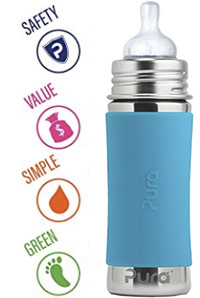
The Pura Kiki stainless baby bottles really stood out in our testing. There are so many things to love about them. First, they use both the stainless steel bottle itself but also a stainless nipple collar, reducing the amount of plastic that comes in contact with the milk. Second, it includes a comfortable silicone sleeve on the outside that helps make the bottle grippier to help older babies hold on, but also reduces condensation. The sleeve is removable and you can swap it out for different colors. Also helpful for babies is the slight hourglass contour of the bottle. Third, it has graduated lines on the inside so you can peek inside and see how much breast milk or formula remains. As with all of these, they are sort of difficult to use and read, but that's just what happens with bottles that aren't transparent. It uses #304 stainless steel on both the bottle and the collar, and the nipple itself is silicone.
We tried out different flow rates and they worked quite well, and we thought that the vented nipples did a decent job preventing gas and reflux. One of the challenges with a stainless steel baby bottle is getting a good venting system, but these nipples do a pretty good job with that. Fourth, we liked that it is dishwasher safe and has a wide enough neck opening that it was easy to clean with a typical bottle brush. Note that it is available in 4-ounce and 8-ounce sizes. It's a bit expensive, coming in just under $20 per bottle, but we think it's worth it for the high-quality build and reliability. There really wasn't much to dislike here. The only thing we didn't think was great was the nipple itself, which seemed a bit flimsy, and the fact that you really had to tighten down the collar to prevent leakage. Outside of that, this is a top-rated stainless steel baby bottle that is worthy of this position on our list! Interested? Check out the Pura Kiki Stainless Baby Bottles here.
2. thinkbaby Stainless Steel Baby Bottle.
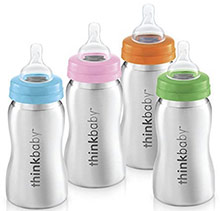
The thinkbaby stainless baby bottles were really impressive, and they come in at a slightly better price point than the Pura Kiki, at around $13 per 9-ounce bottle. We loved several things about these bottles, including the sleek hourglass shape, the plastic collar that seals itself very well onto the bottle, and the vented nipples. The bottles are dishwasher safe, and it was easy to fit a typical bottle brush inside for cleaning. They never leaked in our testing, though they did show condensation quite a bit with a colder beverage. That's primarily because they don't include a silicone sleeve on the outside.
The other two downfalls of not having the silicone sleeve are that when you heat the bottle in a bottle warmer the stainless gets super hot to the touch, and second it's not as comfortable to hold. We also want to point out that while we prefer the thought of having a stainless steel collar, like with the Pura Kiki, we do see the benefit of having the plastic collar - it is much easier to seal well onto the bottle, and you don't need to really crank it down like you do with a stainless collar. So while we prefer totally non-plastic, we definitely see the advantage of the plastic collar. Speaking of leakage, the nipples were surprisingly leak-free. They were also quite good at venting to prevent gas, and not as squishy/flimsy as the Pura Kiki. The only downfall we found with these bottles was the lack of a silicone sleeve, which we think is unfortunate. With a nice sleeve, I think these would definitely be at the top of our list! Interested? Check out the thinkbaby Stainless Baby Bottles here.
3. Pacific Baby Hot-Tot Stainless Steel Baby Bottle.
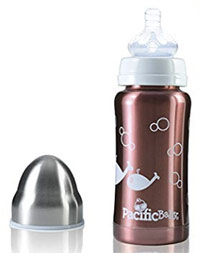
This is the only insulated stainless steel baby bottle on our list, and we think it's an awesome concept. There are a few limitations with stainless steel that we've already mentioned, mainly that it's highly conductive so it loses heat or cold really quickly. One solution is to have a thick silicone sleeve serve as a basic insulator, the other (better) solution is to insulate the bottle itself between two layers of stainless steel. And that's what Pacific Baby did when they made the Hot-Tot stainless baby bottle. Like the other stainless bottles on this list, this one uses #304 stainless, and like the thinkbaby option this uses a plastic nipple collar and silicone nipple. The first thing we really loved about this bottle was that the insulation really worked well: breast milk or formula stayed warm for much longer, and cold beverages stayed cold for much longer. The downfall of the insulation is that using a baby bottle warmer took double the amount of time as usual, presumably because the insulation slowed the heat down from getting into the milk. But that was expected. Insulated bottles are also either larger or have less volume because so much space is taken up by the insulating layer; in this case, they reduced the volume to 7 ounces, which is down from their usual bottle which is 10 ounces (see below).
In our testing, we thought the cute designs on the side of the bottle were awesome, the subtle hourglass shape made it easier to hold, and the collar and nipple did a pretty good job preventing leaks. When turned on its side or upside-down, the nipple itself leaks, but that's helped with the included stainless lid that does an excellent job of preventing leaks. We would keep it upright in the diaper bag, which is the case with any bottle. We actually liked the silicone nipples, which had a good shape, a nice texture around the nipple, and were sturdy with good venting. As your baby grows, this bottle is compatible with other lid attachments, including the sippy cups attachment - we didn't try those, but they look pretty reasonable. What didn't we like? Well, the nipple was pretty leaky without the lid, and we prefer if there is a silicone sleeve on the outside. Also, the graduated lines for measuring how much milk is left were pretty hard to see inside, though the nipple is pretty clear to help you peek in. Interested? Check out the Pacific Baby Hot-Tot Stainless Baby Bottles here.







